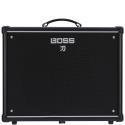What is a Tube Amp? How It Works and Why Use One
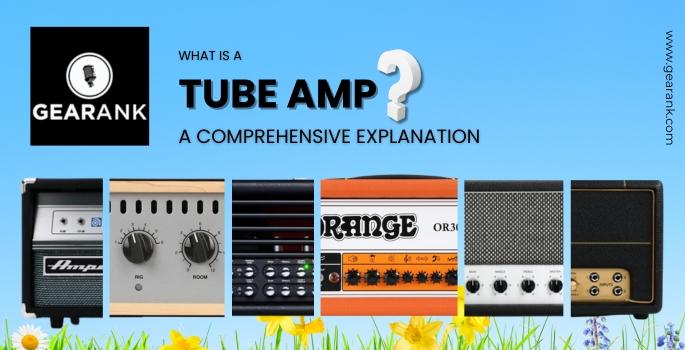
Tube amps played a pivotal role in shaping the electric guitar sound right at the beginning.
And decades after, tube amps continue to be in high demand, even in the face of more modern and affordable alternatives.
But what is a tube amp? Why does it sound better? Is it worth having one?
In this article, you'll learn
-
What is a Tube Amp?
-
What is a Vacuum Tube?
-
Advantages and Disadvantages of Tube Amplifiers
-
Other Types of Guitar Amplifiers
-
Other Applications of Tube Amps
To begin with, let's quickly define what a tube amplifier is.
What is a Tube Amp?
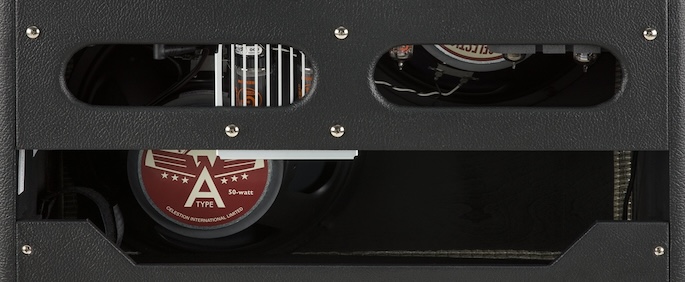
A tube or valve amplifier amplifies sound using old vacuum tube technology.
Given its decades-old design, it's not as efficient and as compact as modern chip-based electronics.
But it still excels in audio applications, producing amplified audio that sounds natural, harmonically rich, and ear-pleasing.
Vacuum tubes can also be driven harder and handle Audio Clipping better, resulting in soft clipping that sounds more musical. This musical sound is what endears the best tube amps to guitar players up to this day.
Origin and Evolution
In 1906, Lee De Forest invented the "Audion" which was the first electronic amp. During those times, tubes or valve amplifiers were mostly used for appliances like radios and televisions.
Tube amps' first use for electric guitar was in the 1930s. It was one of the main options for guitar amplification up until the 1950s, with the introduction of solid-state amps.
And while most electronic devices have moved away from bulky and fragile tube components, many guitar amp manufacturers still maintain tube amps in their line-up.
Guitar legends like Jimi Hendrix (Sunn Coliseum 100-watt P.A. tube amps), and Eric Clapton (Marshall JCM800 1959 100w Super Lead MKII), along with modern virtuosos like Tosin Abasi (Bad Cat Lynx Tube Amp) and Guthrie Govan (V30 THE JACK MKII) are just a few of the many big name guitarists who have played on tube amps.
The tube amp continues to transcend time, and even with high-end amp modeling, tube amp production won't be stopping anytime soon.
Parts and Its Functions
Tube amps consist of several components, the most notable of which are the following:
-
Vacuum Tubes: At the core of a tube amp, these glass vacuum tubes amplify the signal by emitting and controlling the flow of electrons. They can be found in the input and output stages.
-
Power Supply: This provides tube amps with their required power to run.
-
Input Stage: Also called the Preamp Section, where preamp tubes amplify the input signal.
-
Output Stage: Also called poweramp section, this is where power tubes amplify the output before they are sent to the speaker.
-
Tone Control: This is the tone-shaping section of the tube amp. It can be as simple as a single-tone control knob, or complex depending on the amp design.
What is a Vacuum Tube?
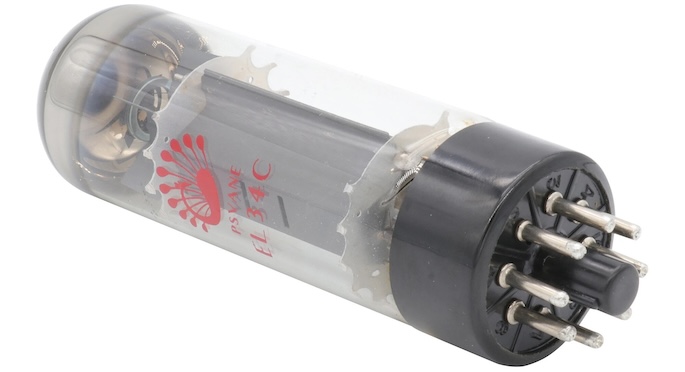
A vacuum tube AKA thermionic tube or valve, uses cathodes that are heated to release electrons.
These electrons are useful for electronic functions like amplifying signals and rectifying current.
It is usually housed in a vacuum-sealed glass container, although some have ceramic or metal containers.
In 1904 John Ambrose Fleming invented a diode or the Fleming valve, which is the vacuum tube in its simplest form.
Its cathode and anode allow electrons to flow in one direction. Control grids can regulate the current between the cathode and anode, while the voltage on the grids controls it.
Types of Tubes in a Tube Amp
There are many variations to the vacuum tube design. Listed below are the ones that are commonly used on guitar amps.
6L6 - The traditional output tube for American-made amps, 6L6 power tubes produce that distinct Fender amp tone (interchangeable with the 5881). In class AB amps, a pair of 6L6s will produce 40-50 watts and up to a hundred watts in a quartet. In class A amps, a pair would put out 25-30 watts, creating that vintage Fender tweed, blackface, and earlier Marshall sound.
6V6GT - power amp tubes often found in 50s-70s small American amps. The 6V6GT power tubes are known for their rich-smooth distortion with a hint of grit. With an output half less than the 6L6, these tubes are easier to drive into distortion. Fender and Gibson used these tubes for their amps before, but Electro-Harmonix brought them back into popularity.
KT66 - A European alternative for the 6L6, mostly seen in vintage amps like the Marshall JTM45s. Kt66s have a more mid-rangy, bold, thick tone and can get even louder than the 6L6.
EL34 - A key part of the crunchy British tone in the 60s and after. This amp can give more power than the 6L6GC with higher voltage. It has thick low ends, crunchy midrange, and sizzling highs when driven to distortion. Can be found in Marshall amps after 1967, Hiwatt amps, and several modern British-style amplifiers.
EL84 - This British output tube is often compared to a smaller version of the EL34. Can be seen in Vox AC15 and AC30 amps. This tube gives a chimney high and crunchy mids, especially with its volume pushed. Many modern amps emulate the sweet and harmonically rich sound of EL84, like TopHat, Matchless, Dr. Z, and more.
Advantages and Disadvantages of Tube Amplifiers
Are tube amps worth their price, bulk, and maintenance woes?
Advantages
-
Better Tone - There are a lot of tube amp tone flavors, but they all share a common ground - they sound rich and full.
-
This larger-than-life sound is what makes tube amps worth getting and is the reason why most guitarists continue to put up with the tube amp's cost and maintenance requirements.
-
Dynamic Response - Tubes react to the way you play. If you play hard, it will force the signals through the tubes at an increased rate. This distorts or drives the valve sound, creating a musical-sounding breakup. If you play softer, the amp produces a softer and cleaner tone.
-
Vintage Sound - With its build being almost the same as the old days, tube amplifiers produce tones reminiscent of the old amps that your guitar heroes used.
-
Aesthetics - Watching the tubes light up as they enhance your guitar's sound is undeniably appealing. These captivating visuals exude a sense of class and sophistication.

Disadvantages
-
Price - Vacuum tubes are no longer widely used in electronics. This makes them a type of specialized component that can drive up the price of tube amps. Thankfully, there are now brands like Bugera that offer tube amps at more accessible price points.
-
Weight - Because of the tubes, transformers, and other tube-related components, these types of amps are usually heavy.
-
Fragile - Made of glass, vacuum tubes are not as durable and reliable as a solid-state transistor or a modern IC chip.
-
Not Energy Efficient and Heat Generation - - Because of its older technology, design, and inherent heat, tube amps are not energy efficient. Tube amps also often have high output impedance, so you have to be careful when pairing amps with different speakers.
-
Maintenance - The tubes of these types of amps have to be checked periodically for any damage. If so, it has to be changed.
Other Types of Guitar Amplifiers
Solid State Amplifiers
Also called transistor amplifiers, a solid-state amplifier has transistors that amplify the signal. Comparing Tube Amp vs Solid State, solid state amps do away with old vacuum tubes, making them more reliable and efficient. Furthermore, solid-state amps are also more energy-efficient, and compact.
Pros: Solid-state amps are cheaper, more portable, and perform more consistently.
Cons: You won't get the unique warmth and full-sounding tone of tube amps.
Modeling Amps
Modeling amps utilize Digital Signal Processing to mimic the sound of different types of amps, including popular tube and solid-state amp models. These are cost-effective as you get more amp tones and even effects in one unit.
Pros: Access to different amp tones, often bundled with effects and other useful features. This versatility makes this the most practical choice for those who want to get more use out of an amp.
Cons: Steeper learning curve. High-end modeling amps can be quite pricey.
Hybrid Amps
This combines tube amp elements with solid-state components. You get some of the warmth of a tube amp and the efficiency of solid-state amps. Most hybrid amps pair preamp tubes with a solid-state power-amp section.
Pros: A hybrid amp gives you the best of both worlds. It retains some of the feel and richness of a traditional tube amp with less bulk and cost.
Cons: On the flip side, it suffers from the same issues that plague tubes and solid-state amps. The preamp tube section has to be maintained, and it won't have the same full sound as a full-on tube amp.
Other Applications of Tube Amps
Through the years, tube amps have been used in different applications like satellites, home theatres, studios, military radar, high-power radio, UHF TV transmitters, and more.
However, in recent years, tube components have given way to more efficient solid-state electronics.
Final Thoughts
So, what is a tube amp? It is a guitar amp that utilizes vacuum tubes in its preamp and power-amp sections, which gives it the ability to produce full-sounding and harmonically rich tones.
This warm tone remains the go-to sound for many guitarists, widely cloned by amp modelers and guitar processors.
If you want the full guitar experience, you must get a tube amp.
Frequently Asked Questions
What are Tube Amp Classes?
Amplifiers have different class types. But to keep the answer focused, we will only tackle the most common tube guitar amp classes A, and AB
Class A has the tubes always on, working at 100% capacity. This makes it a simple amp to use, with a pure tone - but it has lower efficiency and power output.
Class AB takes a more balanced approach. It divides the load into tubes, producing a more natural sound, even when cranked hard. This makes it ideal for clean to overdrive tones. It has more efficiency and output but requires more components and tubes.
What is an Anode and Cathode?
In a polarized electrical device, there's an electrode called the anode, where the current flows in from the outside circuit. In contrast, a diode is where current flows out.
Tube amps work with these two polarized components. The cathode is the heating element that emits electrons, while the anode (or plate) collects and controls these electrons to amplify signals. The cathode is negatively charged, and the anode is positively charged, enabling the control and enhancement of electrical signals within the vacuum tube.
Contributors:
Jerome Arcon - Co-writer



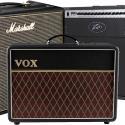
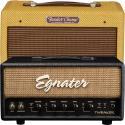

 The Best Guitar Amp from the
The Best Guitar Amp from the 